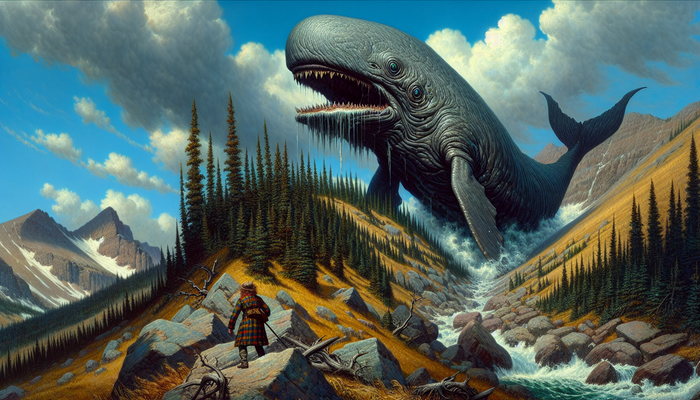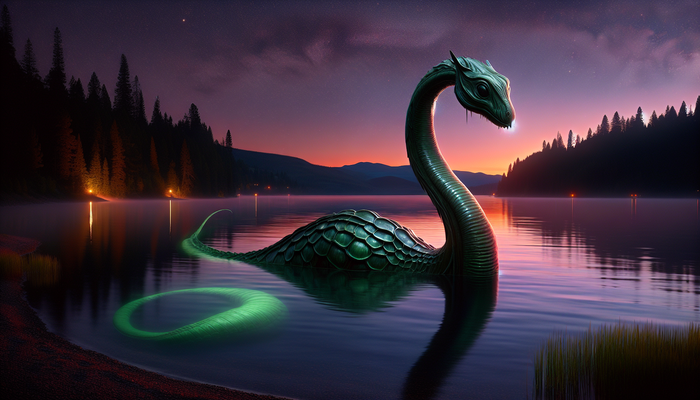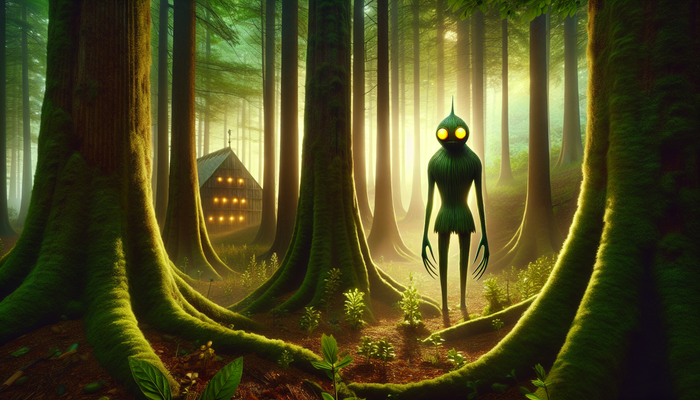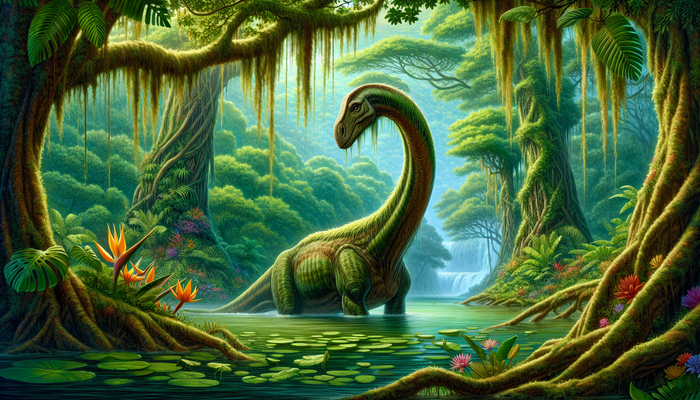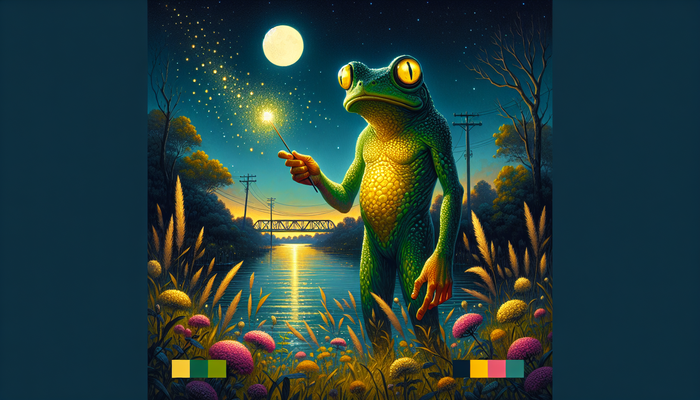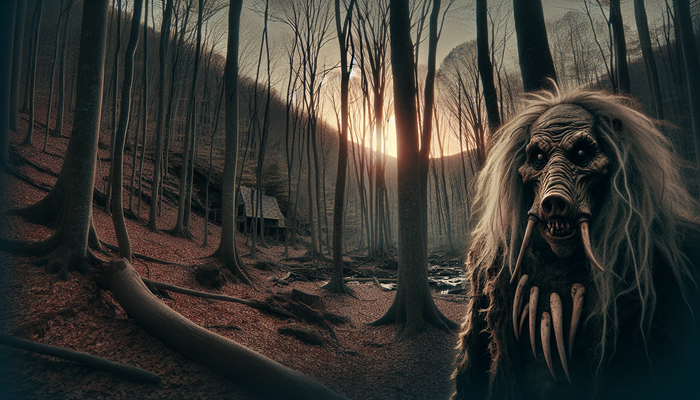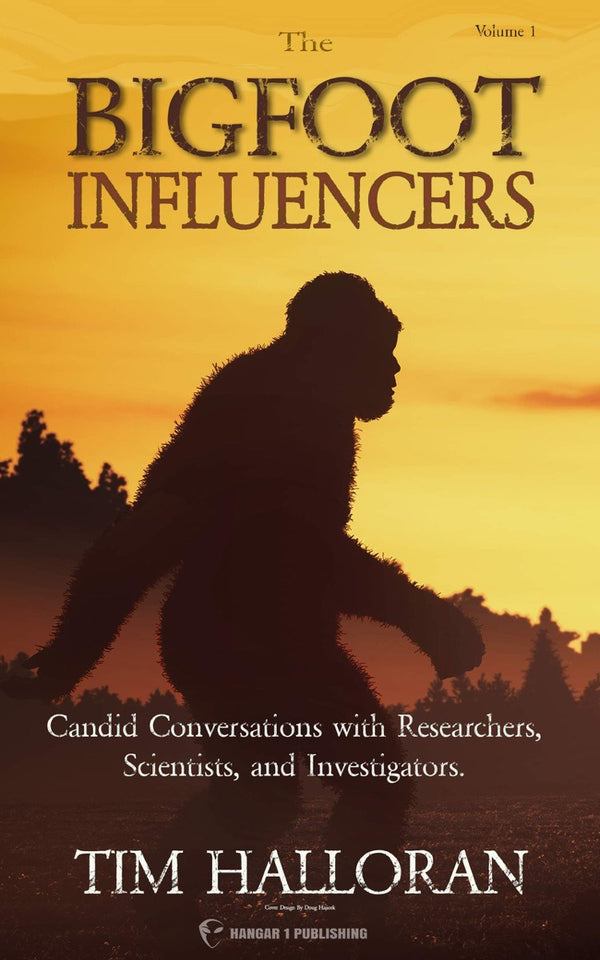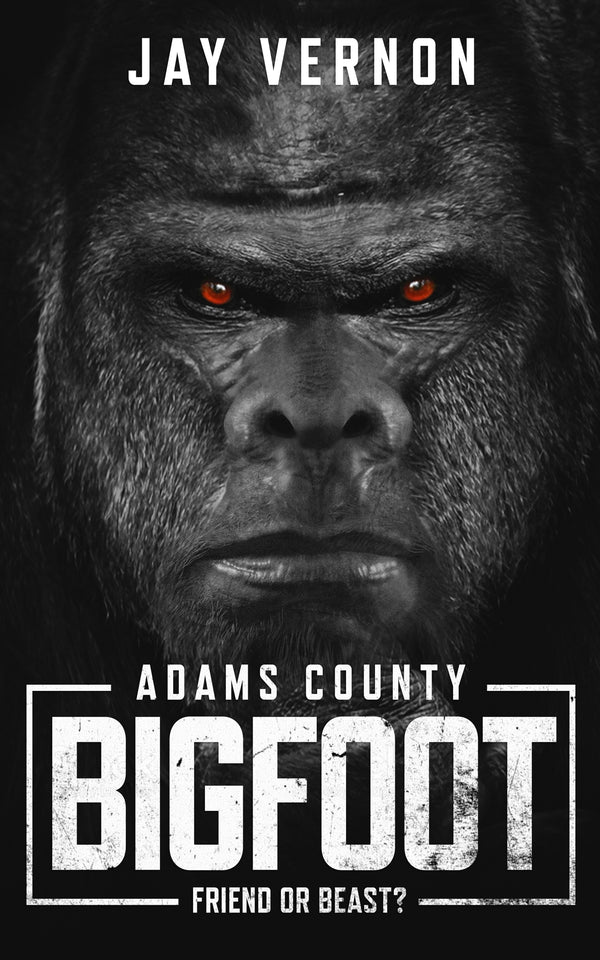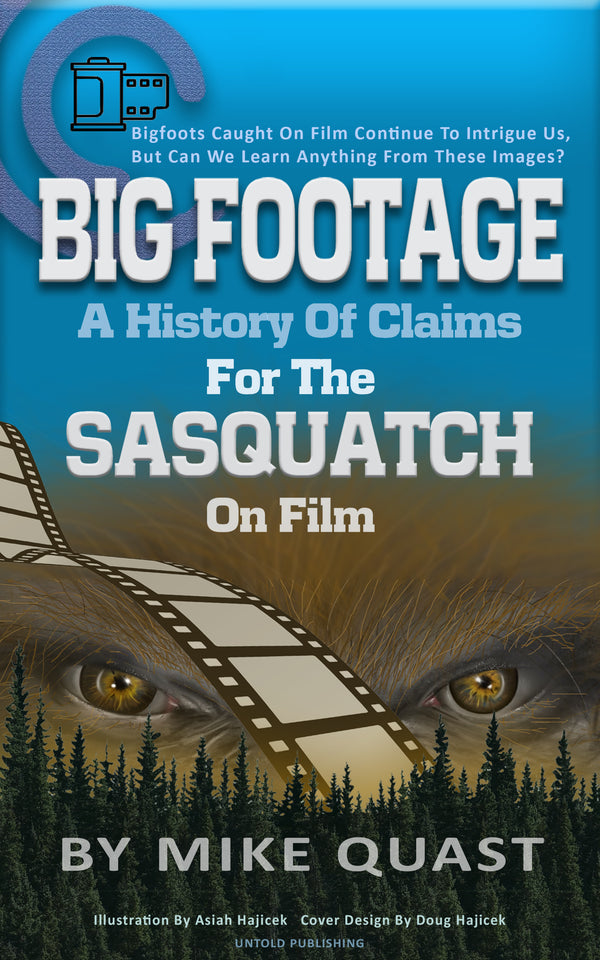Native American Bigfoot Legends and Lore
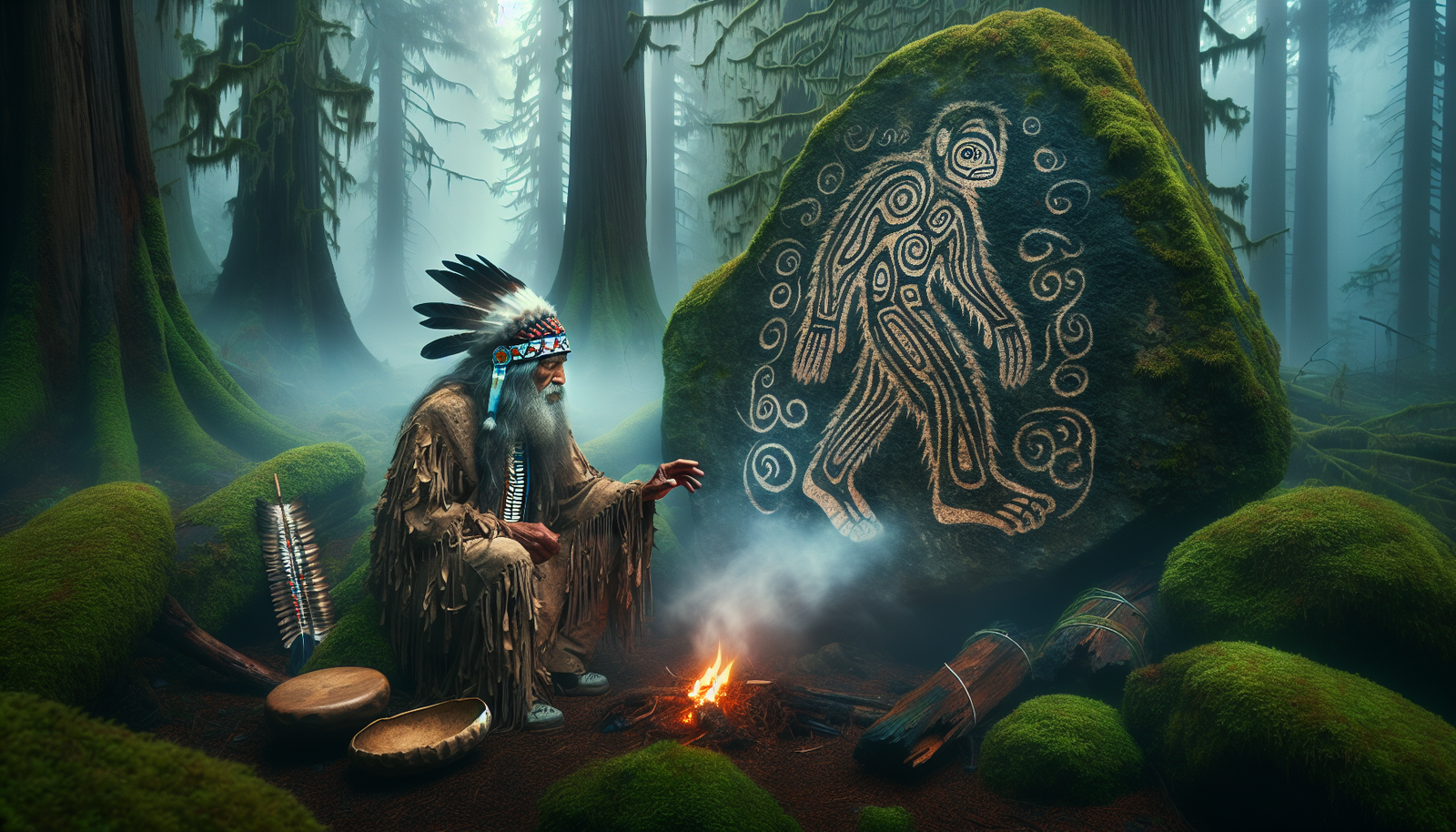
By Dr. Elizabeth Harper, Cryptozoologist and Biologist
The Enduring Mystery of Bigfoot
In the shadowy depths of North America's vast wilderness, a towering figure has long captured the imagination of explorers, scientists, and laypeople alike. Bigfoot, also known as Sasquatch, is an enigmatic creature that has been the subject of fascination, speculation, and investigation for centuries. While many have focused on the physical evidence for Bigfoot's existence, such as footprints, hair samples, and blurry photographs, there is another dimension to this mystery that is often overlooked: the rich tapestry of Native American legends and lore surrounding Bigfoot-like creatures.
As a biologist and historian specializing in cryptozoology, I have long been intrigued by the Native American roots of the Bigfoot phenomenon. My research has led me to a startling realization: these indigenous traditions are not mere myths or superstitions, but rather a complex and sophisticated body of knowledge that provides crucial context and deeper meaning to the Bigfoot mystery. By delving into the stories, beliefs, and practices of Native American tribes across the continent, we can gain a more holistic understanding of what Bigfoot represents and why it continues to captivate us.
The Many Names and Faces of the Native American Bigfoot
One of the first things that struck me in my research was the sheer ubiquity of Bigfoot-like creatures in Native American folklore. From the dense forests of the Pacific Northwest to the rolling hills of the Appalachians, indigenous peoples have long told stories of giant, hairy, human-like beings that roam the wilderness. These creatures go by many names, each reflecting the unique cultural and linguistic traditions of the tribes that tell their tales.
- The Lummi people of the Pacific Northwest speak of "Ts'emekwes," a race of nocturnal, hairy giants that dwell in the mountains and forests.
- The Salish call them "Sasquatch," which means "wild man" in their language.
- The Algonquin tribes of the Northeast have legends of the "Witiko" or "Wendigo," a malevolent, cannibalistic spirit that possesses humans.
- The Shoshone of the Great Basin know of "Seeahtlk," a powerful and dangerous creature that roams the high desert.
And the list goes on: the Yokut of California have "Mayak Datat" or "Hairy Man," the Hupa have "Omah," the Chickasaw have "Lofa," the Choctaw have "Shampe." In total, there are over 50 documented names for Bigfoot-like creatures in Native American traditions, each with its own unique characteristics and associated stories.
What's remarkable is not just the diversity of these names, but the continuity of the traditions surrounding them. Many of these legends have been passed down orally for generations, with some stories dating back hundreds or even thousands of years. This suggests that the Native American Bigfoot is not a recent invention or a product of modern media hype, but rather a deeply rooted and enduring part of indigenous cultural heritage.
Bigfoot as a Supernatural and Spiritual Being
As I delved deeper into these Native American Bigfoot traditions, I began to realize that these creatures were not simply regarded as undiscovered animals or relict hominids. In many indigenous worldviews, Bigfoot is imbued with supernatural powers and spiritual significance that go far beyond the physical realm.
Many tribes ascribe shapeshifting abilities to Bigfoot, believing that they can transform into other animals or even humans at will. The Lummi tell stories of Ts'emekwes appearing as a deer or a bear to trick hunters, only to reveal their true form when shot with an arrow. The Nootka of Vancouver Island believe that Sasquatch can turn invisible or teleport from one place to another in the blink of an eye.
Other tribes see Bigfoot as an interdimensional being, capable of moving between the physical world and the spirit realm. The Lakota of the Great Plains believe that Bigfoot is a manifestation of Chiye-tanka, a powerful spirit that can bless or curse humans depending on their actions. The Apache of the Southwest have stories of Mogollon Monster, a shape-shifting sorcerer that can control the weather and cause sickness in those who offend it.
In many Native traditions, Bigfoot serves as a kind of intermediary between the human and natural worlds, enforcing taboos and moral codes. The Yurok of Northern California believe that Omah is a guardian of the forest, punishing those who take more than they need or fail to show proper respect for nature. The Choctaw have stories of Shampe, a hairy giant that kidnaps children who misbehave or wander too far from camp.
These supernatural and spiritual dimensions of the Native American Bigfoot add a layer of complexity and depth to the phenomenon that is often missing from mainstream accounts. They suggest that Bigfoot is not just a biological puzzle to be solved, but a powerful symbol of the mysteries and forces that animate the natural world.
Tribal Traditions and Sacred Stories
To fully grasp the significance of Bigfoot in Native American cultures, it is essential to examine specific tribal traditions and sacred stories in more detail. These narratives provide a window into the rich cosmologies and belief systems of indigenous peoples, and reveal the many roles that Bigfoot plays in their worldviews.
One of the most striking examples comes from the Yokut people of central California. In their tradition, "Mayak Datat" or "Hairy Man" is a central figure in creation myths, playing a pivotal role in shaping the course of human history. According to Yokut legend, Hairy Man was one of the first beings to walk the earth, along with other powerful spirits like Eagle, Coyote, and Bear. These beings held a great council to decide the fate of the creatures they had created, including humans.
In this council, Hairy Man argued that humans should walk upright on two legs, while Bear believed they should walk on all fours like animals. In the end, Hairy Man prevailed, and humans were given the gift of bipedalism. This story is depicted in ancient Yokut pictographs, which show Hairy Man and the other spirits in their fateful debate.
But Hairy Man's influence doesn't end there. The Yokut also believe that seeing this creature is a powerful omen of death, and they have special funeral rituals and songs that invoke Hairy Man's power to guide souls to the afterlife. In this way, Bigfoot is not just a character in a myth, but a active presence in Yokut spiritual life and cultural practices.
Other tribes have their own sacred stories that feature Bigfoot in central roles:
- The Lummi tell of "Ts'emekwes," a tribe of hairy, nocturnal forest-dwellers that are said to whistle a hypnotic tune to lure travelers off the path and into the darkness.
- The Suquamish have stories of "Wild Men" that break into villages to steal fish, but later leave gifts of deer meat as a sign of respect.
- The Chehalis of the Pacific Northwest have legends of "Seatco," a race of cannibalistic giants that once terrorized their ancestors. According to the stories, these creatures were eventually outwitted and destroyed by a clever hero named Tsiatko, who used his wits and magic to outsmart the monsters. This tale serves as a reminder of the power of human ingenuity in the face of even the most fearsome adversaries.
In many Native traditions, Bigfoot also serves as a kind of cautionary tale or moral lesson. The Ojibway and other Plains tribes see these creatures as a warning sign of impending danger or upheaval, urging people to be on their guard and respect the natural order. The Yakama tell stories of "Qah-lin-me," a hairy giant that sneaks into camps at night to steal children who have wandered too far from the fire, teaching them a lesson about obedience and the importance of staying close to the community.
Taken together, these tribal traditions paint a picture of Bigfoot as a complex and multifaceted figure, one that is deeply woven into the fabric of Native American cultural identities and spiritual beliefs. They challenge us to look beyond the surface-level fascination with the creature's physical reality, and to consider the deeper meanings and lessons that these stories have to offer.
Bigfoot and Native Identity
As I explored the connections between Bigfoot and Native American cultures, I began to notice a curious pattern: in many stories, these creatures were described as having a close relationship or even kinship with indigenous peoples themselves. This blurring of the lines between the human and the monstrous, the natural and the supernatural, is a recurring theme in Native Bigfoot lore.
Some tribes, for example, have stories of Bigfoot creatures that speak their own languages. The Lummi tell of Ts'emekwes that communicate with each other in a complex system of whistles and calls, while the Nootka have legends of Sasquatch that speak a dialect of their own tongue. In other tales, Bigfoot is said to understand and even converse with humans in their native languages, suggesting a level of intelligence and cultural sophistication that goes beyond mere animal instinct.
Other stories describe Bigfoot interbreeding with humans, particularly Native women. The Yurok have tales of Omah abducting young women from their villages and taking them as wives, only to release them years later with half-human, half-Bigfoot offspring. The Hupa tell a similar story of a woman who was kidnapped by a Bigfoot and bore his child, a boy named Oshkosh who grew up to be a mighty warrior and leader of his people.
These stories of Bigfoot-human hybrids are not limited to the realm of myth and legend. In the late 19th century, a Salish man named Jacko was allegedly captured by a group of railroad workers in British Columbia, and was described as a "half-man, half-beast" with hairy skin and ape-like features. Some researchers have suggested that Jacko may have been a real-life Bigfoot-human hybrid, though the evidence for this claim remains controversial.
In other traditions, Bigfoot is seen as a kind of "wild Indian" or lost tribe of indigenous people who have chosen to live apart from the modern world. The Navajo have stories of the "Ye'iitsoh," or "Big God," a race of giant, hairy humans who were once part of their tribe but were banished for their violent and cannibalistic ways. The Shoshone speak of "Nunnupe," or "The People Who Live in the Rocks," a secretive band of human-like creatures that dwell in the remote canyons and caves of the Great Basin.
These stories blur the boundaries between Bigfoot and Native peoples, suggesting a kind of kinship or shared history that goes beyond mere coexistence. They hint at the possibility that the Bigfoot phenomenon may be rooted not just in biology or ecology, but in the complex web of cultural identities, spiritual beliefs, and historical traumas that have shaped Native American societies for centuries.
Some researchers have even suggested that the Bigfoot legend may have originated as a way for indigenous peoples to cope with the devastating impacts of European colonization and forced assimilation. By imagining a creature that embodies both the wildness and the resilience of their traditional ways of life, Native Americans may have found a way to preserve their cultural identity in the face of overwhelming odds.
Of course, these connections between Bigfoot and Native identity are not without their complications and controversies. Some indigenous people have criticized the way that Bigfoot has been appropriated and commodified by non-Native researchers and entrepreneurs, often without proper respect for the sacred stories and traditions that surround these creatures. Others have argued that the emphasis on Bigfoot as a kind of "noble savage" or romanticized symbol of indigenous resistance can obscure the very real struggles and challenges faced by Native communities today.
Despite these tensions, however, the enduring power of the Native American Bigfoot legend speaks to the deep and abiding connections between indigenous peoples and the natural world. By studying these stories and traditions with care and respect, we may gain a deeper appreciation not just for the mystery of Bigfoot, but for the rich and complex histories of the first peoples of this land.
Historical Accounts and the Merging of Native and Settler Lore
As European settlers began to push westward across North America in the 19th century, they brought with them their own tales and traditions of wild men and hairy beasts. But as they encountered the indigenous peoples of the continent, they also began to hear stories of Bigfoot-like creatures that had long been part of Native American lore. Over time, these two strands of folklore began to intertwine and influence each other, creating a new kind of Bigfoot legend that blended elements of both Native and settler culture.
One of the earliest documented accounts of a Bigfoot sighting by European settlers comes from the journals of David Thompson, a British-Canadian fur trader and explorer who traveled extensively throughout the Pacific Northwest in the early 1800s. In 1811, while camping near the Spokane River in present-day Washington state, Thompson recorded a strange encounter with a group of "hairy giants" that he described as "not quite human."
According to Thompson's account, these creatures were over seven feet tall, with long black hair covering their bodies and faces. They communicated with each other in a language that sounded like "a kind of whistling," and they seemed to be unafraid of the humans in their midst. Thompson's Native American guides told him that these were the "Sasquatch," a race of wild men that lived in the mountains and forests of the region.
Other early settler accounts of Bigfoot sightings soon followed. In 1840, a missionary named Elkanah Walker recorded stories of "giants" and "hairy men" among the Native peoples of the Spokane area. In 1847, a group of miners in California's Sierra Nevada mountains claimed to have been attacked by a troop of "gorillas" or "wild men" that threw rocks at their cabin and tried to break down the door.
But perhaps the most famous historical Bigfoot encounter occurred in 1924, near the town of Kelso, Washington. A group of miners working in the nearby Ape Canyon reported being attacked by a troop of "ape-men" or "mountain devils" that hurled rocks at their cabin and tried to break in through the windows. The miners fought back with guns and dynamite, but claimed that the creatures were unfazed by their weapons.
News of the "Battle of Ape Canyon" quickly spread, and soon locals were coming forward with their own stories of Bigfoot encounters in the area. Some claimed to have seen the creatures themselves, describing them as huge, hairy, and ape-like, with glowing red eyes and a foul stench. Others reported finding strange footprints and other signs of the creatures' presence, such as broken branches and overturned logs.
As word of the Ape Canyon incident spread, local Native American tribes began to come forward with their own stories and traditions surrounding Bigfoot-like creatures in the area. The Yakama people, for example, told of the "Qah-lin-me" or "mountain devils," hairy giants that were said to steal children and attack humans who ventured too far into their territory. The Lummi spoke of the "Ts'emekwes," a race of hairy, nocturnal forest-dwellers that could hypnotize humans with their whistling.
These Native American stories added a new layer of depth and complexity to the Bigfoot legend, suggesting that the creatures were not just a recent phenomenon or a product of overactive imaginations, but rather a deep-rooted part of the region's history and culture. They also hinted at a possible explanation for the Ape Canyon incident and other Bigfoot sightings in the area, as the creatures were often described as fiercely territorial and prone to attacking humans who encroached on their domain.
As more and more settlers began to report Bigfoot sightings and encounters, they often turned to local Native American tribes for explanations and context. In some cases, this led to a kind of cross-cultural exchange, as indigenous peoples shared their stories and traditions with
From Bigfoot to UFOs: Hangar 1 Publishing Has You Covered!
Explore Untold Stories: Venture into the world of UFOs, cryptids, Bigfoot, and beyond. Every story is a journey into the extraordinary.
Immersive Book Technology: Experience real videos, sights, and sounds within our books. Its not just reading; its an adventure.


